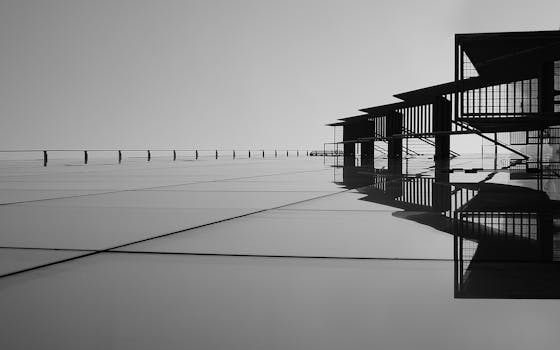Columns and Pilasters: Support and Decoration in Architecture
Columns and pilasters are two fundamental architectural elements that serve both structural and aesthetic purposes. These features have been utilized since ancient times, evolving through various architectural styles and movements. This article explores the significance of columns and pilasters, their historical context, and their role in modern architecture.
The Historical Context of Columns and Pilasters
Columns date back to ancient civilizations, with the earliest examples found in Egyptian and Greek architecture. They were primarily used to support roofs and create open spaces. Pilasters, on the other hand, are flat, rectangular columns attached to walls, serving as decorative elements that mimic the appearance of a column.
- Egyptian Columns: The Egyptians used columns extensively in temples, often adorned with intricate carvings and hieroglyphs.
- Greek Orders: The Greeks developed three classical orders—Doric, Ionic, and Corinthian—each with distinct styles and proportions.
- Roman Innovations: The Romans expanded on Greek designs, introducing the composite order and using columns in grand structures like the Pantheon.
Structural Importance of Columns
Columns are essential for supporting the weight of structures, allowing for larger and more open interior spaces. They distribute loads from the roof and upper floors down to the foundation, ensuring stability and safety. The choice of material and design can significantly impact a building’s structural integrity.
- Materials: Common materials for columns include stone, concrete, steel, and wood. Each material offers different strengths and aesthetic qualities.
- Load-Bearing Capacity: The design of a column, including its height, diameter, and shape, affects its load-bearing capacity. For instance, a thicker column can support more weight.
- Architectural Style: The style of a column can also influence its structural function. For example, slender columns are often used in modernist architecture to create a sense of lightness.
Decorative Aspects of Pilasters
Pilasters serve as decorative elements that enhance the visual appeal of buildings. They can be found in various architectural styles, from classical to contemporary, and are often used to create a sense of rhythm and proportion in facades.
- Visual Balance: Pilasters can help achieve visual balance in a building’s design, framing windows and doors while adding depth to flat surfaces.
- Ornamentation: Many pilasters are adorned with decorative elements such as capitals, bases, and carvings, which can reflect the architectural style of the period.
- Symbolism: In some cultures, pilasters symbolize strength and stability, reinforcing the building’s purpose and significance.
Case Studies: Iconic Examples of Columns and Pilasters
Several iconic buildings showcase the effective use of columns and pilasters, demonstrating their importance in architectural design.
- The Parthenon (Athens, Greece): This ancient temple features Doric columns that exemplify simplicity and strength, creating a harmonious relationship with its surroundings.
- The Colosseum (Rome, Italy): The Colosseum incorporates all three classical orders—Doric, Ionic, and Corinthian—showcasing the Romans’ mastery of column design.
- The White House (Washington, D.C., USA): The neoclassical design of the White House prominently features pilasters, enhancing its grandeur and historical significance.
Modern Applications of Columns and Pilasters
In contemporary architecture, columns and pilasters continue to play a vital role. They are often used in innovative ways to blend functionality with artistic expression.
- Skyscrapers: Modern skyscrapers utilize steel columns to support vast structures while allowing for expansive glass facades.
- Public Buildings: Many civic buildings incorporate pilasters to evoke a sense of tradition and permanence, connecting modern designs with historical precedents.
- Residential Architecture: Home designs often feature columns on porches or entryways, adding character and charm to residential spaces.
Conclusion
Columns and pilasters are more than mere architectural elements; they embody the intersection of support and decoration in architecture. From their historical roots in ancient civilizations to their modern applications in skyscrapers and public buildings, these features continue to shape our built environment. Understanding their significance enhances our appreciation of architecture as both a functional and artistic discipline. As we move forward, the evolution of columns and pilasters will undoubtedly continue to reflect the changing tastes and technologies of society.
